13.09.21
Hi Grif-friends!
Just because our theatre’s dark, doesn’t mean the Griffs aren’t continuing to work hard behind the scenes! Welcome to Staff Tutorials, which will hopefully bring you some joy and creative thinking while at home.
Here on the Griffin blog, we’ll share amazing creations/stories/ideas/hobbies from our staff as we keep ourselves busy during lockdown. This week we’re featuring Tessa Leong interviewed by Marketing Assistant Rebecca Abdel-Messih. Tessa takes us through her plant journey, and shares some handy tips for beginner plant parents that she’s discovered along the way!
Rebecca: Hi! Thank you for joining me today. We’ll start off with your name and role at Griffin.
Tessa: I’m Tessa Leong and I’m the Associate Artistic Director at Griffin.
Rebecca: Wonderful! My first question to you is: do you have a favourite or least favourite plant?
Tessa: That’s a good question. I have to say my most favourites come in a category which is ‘don’t die easily’ and require minimal attention. I don’t know the names of most of the plants. I usually go by them as ‘that tall, spikey one’ or ‘the one with the shiny green leaves’ or ‘the one over there that looks like it’s about to die’. That’s how I refer to them.
Rebecca: That’s so great! Well, have you ever had a plant that you thought was easy to take care of and then it just… died?
Tessa: I had the opposite actually. I had a plant that was struggling, that I’ve had for years and years and years and then I moved states and it was in storage for two weeks while I was in quarantine, and it came out looking better than it ever had. So, you know, apparently whatever I was doing was too much. It just preferred to be in a warehouse with like fluoro lighting and no water.

Rebecca: Oh wow, what a great story! So you’ve got a good plant collection at home?
Tessa: Yeah, I’ve got a few! My housemates have plants that they’ve inherited from different places, and I have a couple of my own as well. We’re also just a bit of a fan of getting clippings through some neighbourhood foraging. We went on a little foraging trip last night in the dark and that was really fun. That’s just about clipping things that you think might grow if you put them in a jar of water.
Rebecca: Have you been successful so far?
Tessa: There’s a couple that have been really excellent and have regrown, but I don’t really know what I’m doing, so it’s more about the fun of seeing if they’ll survive!
Rebecca: What a great way to keep you entertained during lockdown. So my next question is if you’ve got any advice for a beginner plant lover, who may have gotten a small indoor plant but might not know what to do with it!
Tessa: So, I didn’t use to do this, but make sure you always clip off the leaves that are browning because you don’t want any effort to go into the ones that are already dying. So, trim that back.
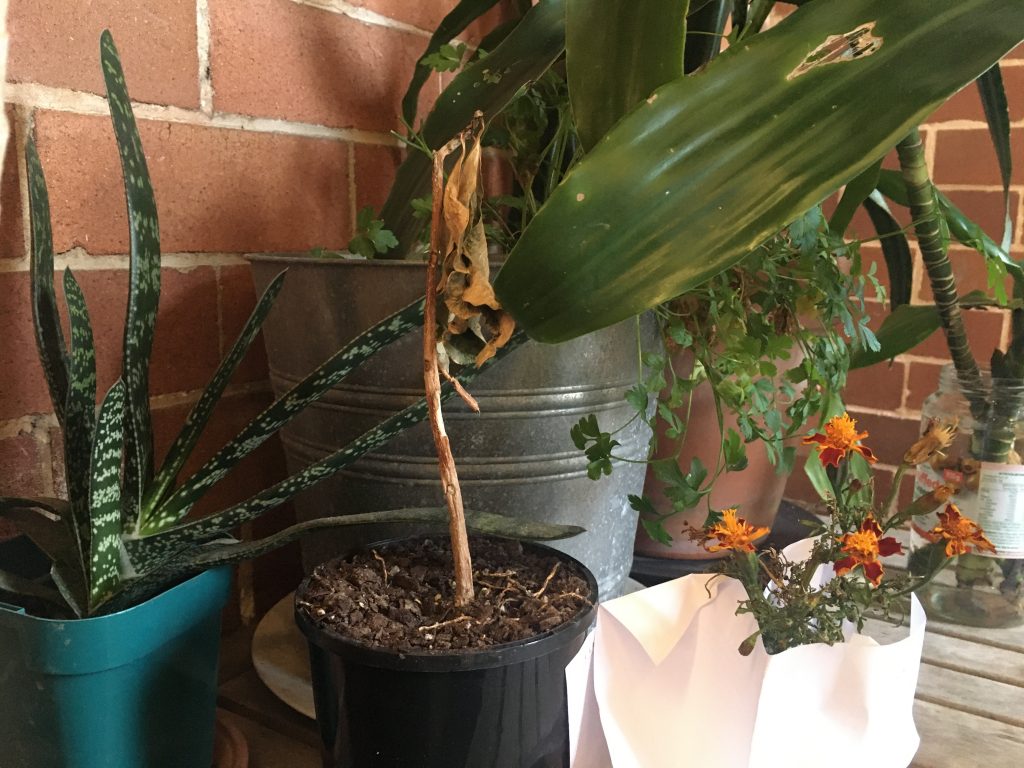
Also, don’t under- or over-water your plants. Just shove your finger in the soil, and if it’s dry, then you can water it. If it’s not dry, don’t water it! That’s a bad idea. You don’t want to drown the plant. Rubber plants are really sturdy and that’s a great beginner plant. I have one of those and they’re really nice. They’re shiny and beautiful and it will just grown really tall and lovely.
Rebecca: Where do you get them from? Bunnings?
Tessa: There are lots of places that you can get them from. Bunnings is kind of the best but probably not great to visit right now!
Rebecca: Oh yes! So true.
Tessa: That’s why neighbourhood foraging at the moment is the best because you can put your mask on and go out when there’s not many people around and just try your luck!
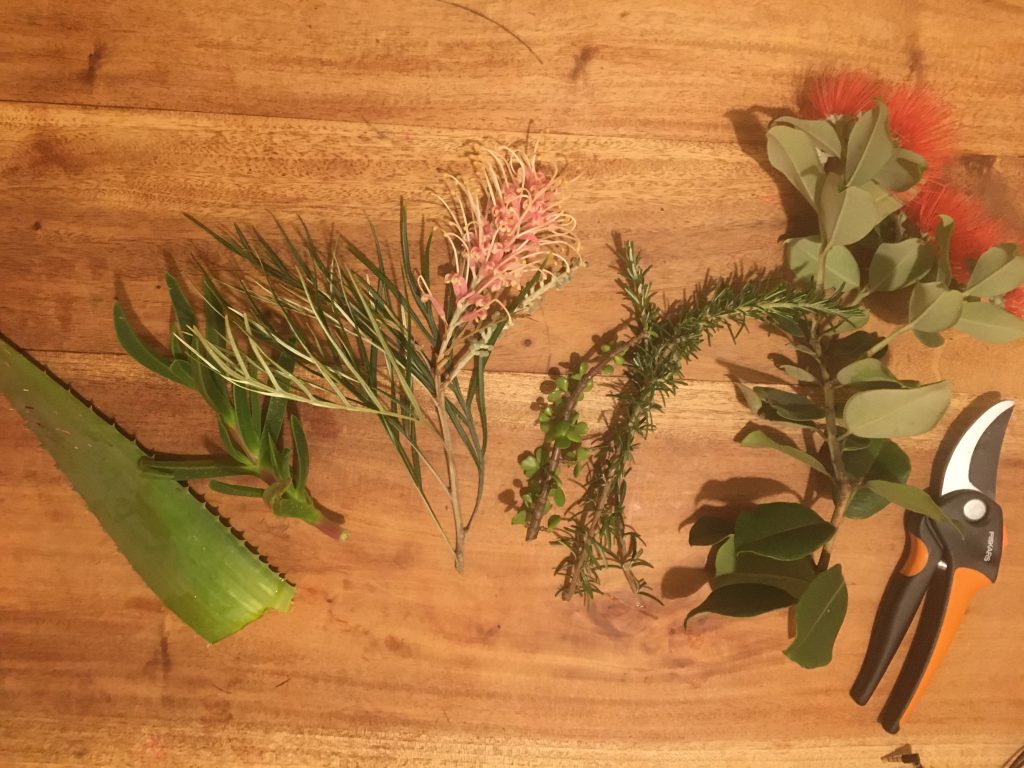
Rebecca: That is such a great idea!
Tessa: And if you’re going for walks with friends, they might have clippings from plants they have at home. So then they can give you a clipping, and then you can chuck it in some water. We’ve got two really massive Devil’s Ivy plants at home and we’re just constantly clipping from them. You can literally snip it off and then put it in a jar with water. We’ve just done that all around the house, and they just keep growing and they grow their own little roots. And another thing which I heard about last year is that if you buy spring onions, if they’ve got the roots still attached, you can just cut off like a centimetre of the white part of the spring onion, and then you just put it in water and they regrow, and it’s so satisfying.
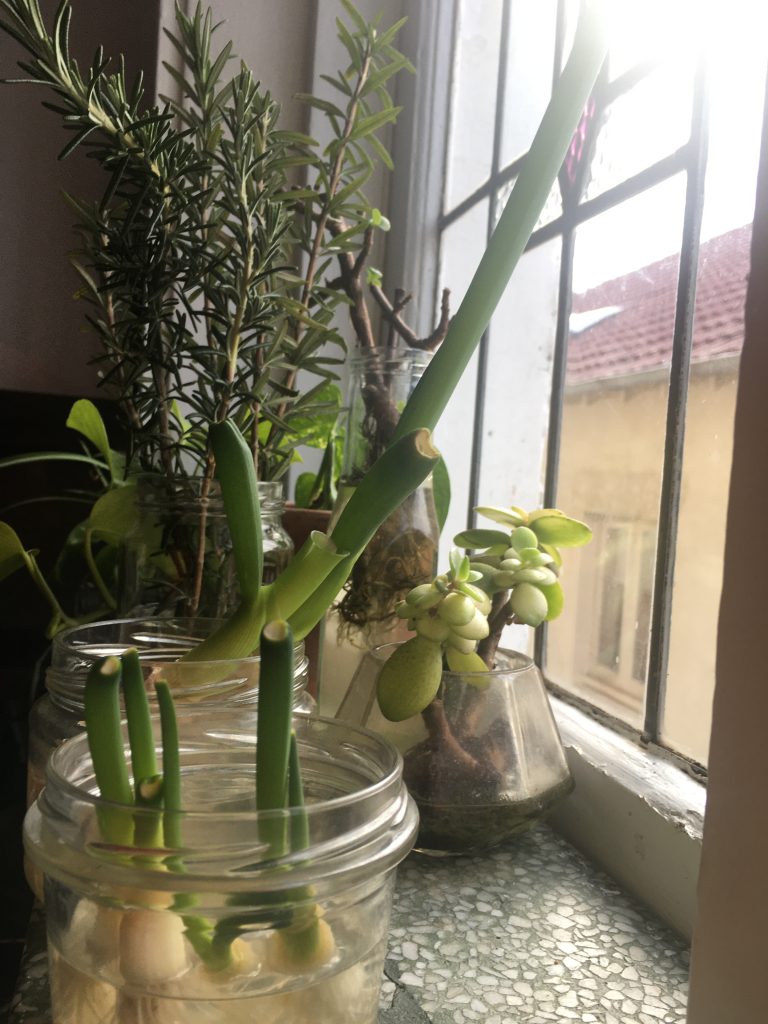
Rebecca: What! That’s so cool. I had no idea. I usually just chuck it, because I don’t know what to do with them!
Tessa: Yeah, if it’s got the roots still on them. I used to use it right to the root, but now I leave a centimetre and then you just put it in water and stand it up and they grow within days. So it’s like also just like a really nice thing in the morning to go, oh look, something happened overnight.
Rebecca: Oh god, that’s incredible. So you don’t submerge it, right?
Tessa: You leave the top of the spring onion above the water and then just make sure the roots are in. Yeah. And it’s really cool. It’s fun. You can also like experiment with other things that you buy from the supermarket. They still have roots, all the herbs and the random things that you get. Sometimes you can do the same with coriander root and that kind of stuff. So it’s a bit of an experiment.
Rebecca: That’s a really good tip! And super easy to do. If there’s a beginner plant lover out there, you could try with herbs that still have roots, if you don’t want to commit to like a bigger plant!
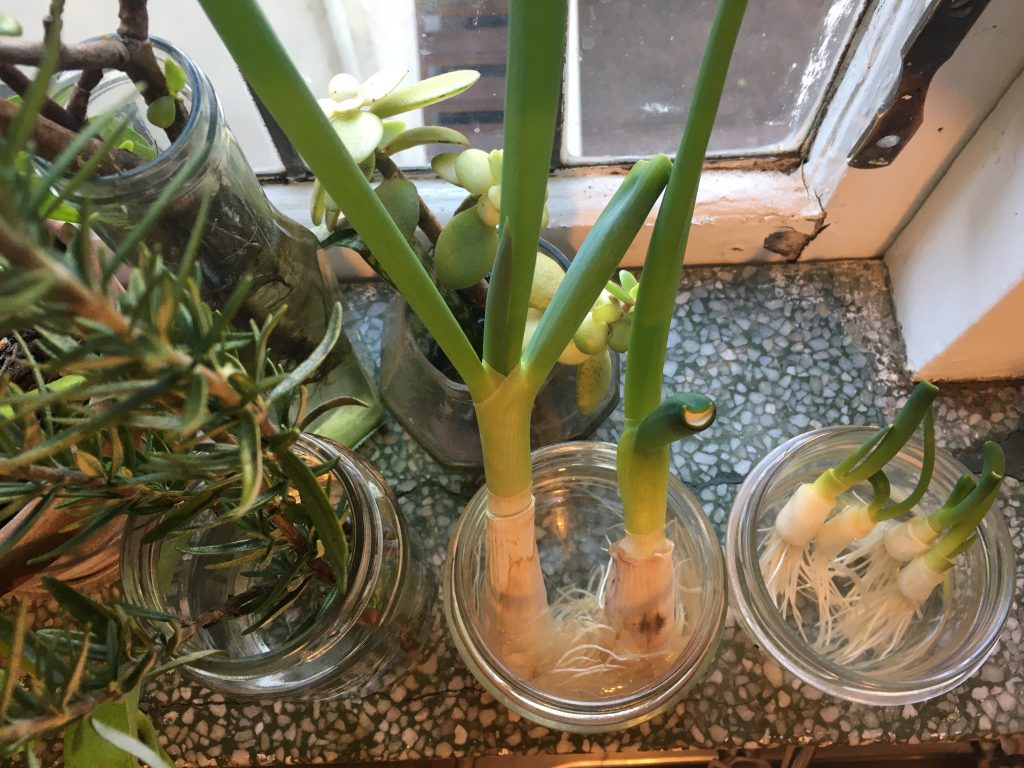
Tessa: Jars of water are your friend. If you haven’t got soil, or gloves, or anything, some things will just grow in a jar of water, so it’s not a lot of maintenance.
Rebecca: Do you have any resources or links you’ve used that have helped you on your plant journey?
Tessa: Hm, I’m sort of the opposite school. I could probably learn a whole lot more if I actually did that, but I just enjoy not knowing and getting away from a screen.
Rebecca: So more trial and error!
Tessa: It definitely comes from trial and error. My housemate and our neighbours—they’re really green thumbs. So I can just go, I’m just gonna put this here’, and then they help me. I just rely on housemates’ and neighbours’ advice, but also mainly some trial and error. If you really get into trouble, you can just do a quick search of what the plant is. I usually need to like look at pictures and go ‘is it that one?’
Mostly, it’s going to be about water or sunlight or soil. You just need to do different combinations of either too much water, not enough water, too much sun, not enough sun. What does the soil look like? We have this little plant feeder stuff, which we call chicken salt, because it’s bright yellow and looks like chicken salt. And so sometimes we just give the plant some chicken salt and it’s fine.
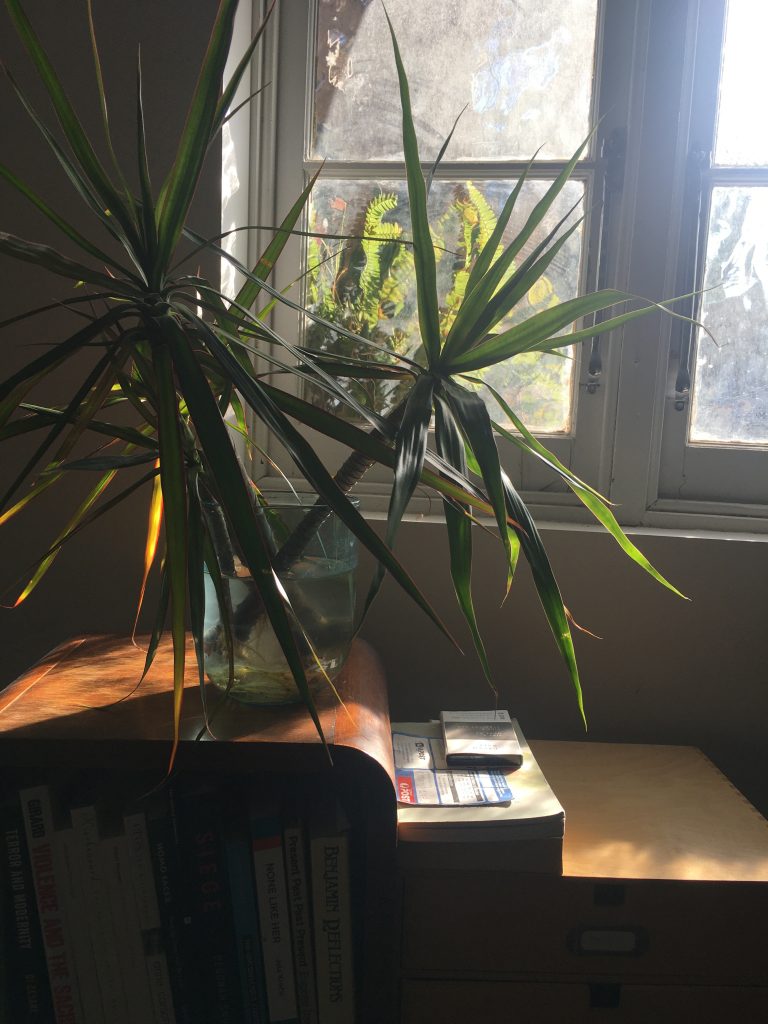
Rebecca: I mean, you can’t go wrong with Googling, which exactly what I would do. We have a little succulent that we bought last year from Ikea… and it’s going strong. We’ve named her Suzy the Succulent. I thought she was going to die at one point, but she’s still growing! I think I do need to put it in a bigger pot, because her roots are really long. There’s a lot of roots. I’m constantly like ‘Ooh, don’t know what to do with this!’
Tessa: Can you propagate it? Can you take little clippings of it and put them in other jar?
Rebecca: I could! It’s not something I’ve thought of. Is it just a matter of taking one of those spiky little leaves? My succulent is a classic spiky one.
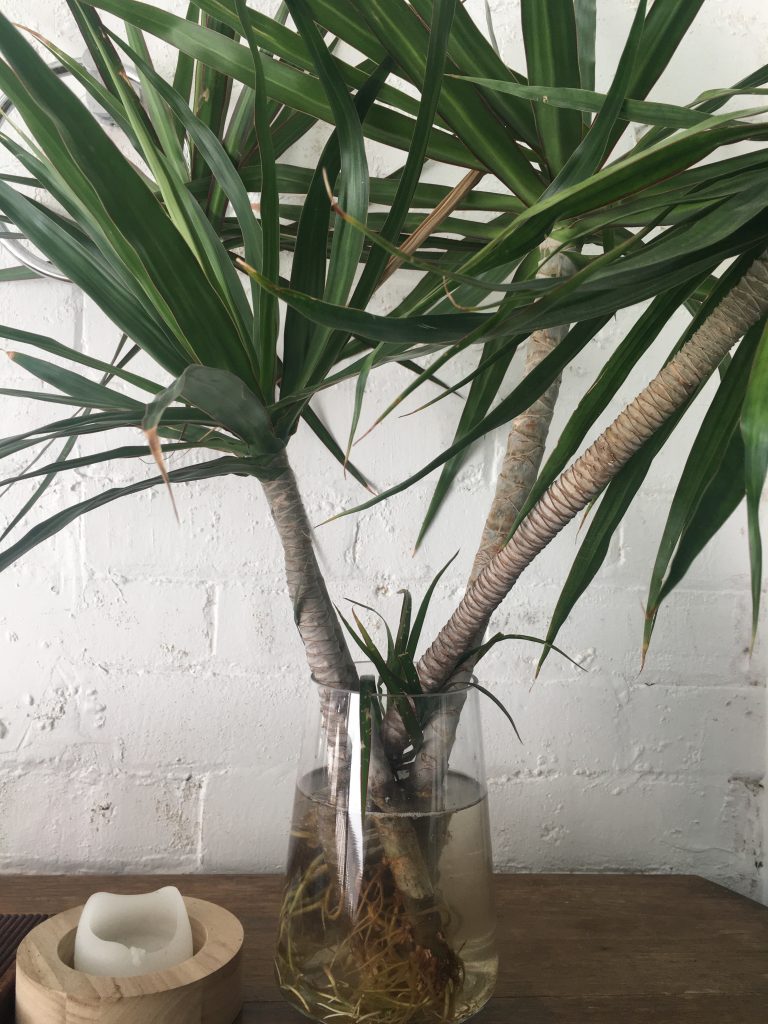
Tessa: Ahh. You might have to talk to Ang Collins (Marketing Coordinator/Fellow Plant Nerd) about that. She’s in the advanced stage of propagating. I’m just in the beginners’ experimental phase.
Rebecca: And I’m one step below that! I’m all about trial and error. Then again, that’s the only plant we have. Everything else is fake and full of dust.
Tessa: Oh yeah! You have to dust your real plants as well.
Rebecca: Really?
Tessa: Yeah. The dust stops it from absorbing air and light. So you have to dust your plants.
Rebecca: Oh damn.
Tessa: If there’s dust sitting on the leaves, it’s just like there’s dust sitting on your lungs or your breathing apparatus. They need it to soak up air and water and light. So make sure you dust your plants!
Rebecca: Thank you so much Tessa for your time! That’s all the questions I have. Did you have anything final to add?
Tessa: Yeah, look I’m not an expert. I think for me, it’s just about having a bit of fun. So whatever people can kind of zero in on, whether it’s finding insects on plants or trying to regrow your vegetables or, you know, whatever. I think it’s just a nice thing to kind of take your attention to something that you haven’t maybe paid attention to before, which is nice. Thanks Rebecca!
Stay tuned for more Staff Tutorials from all of us at Griffin! Stay safe, Grif-friends.

